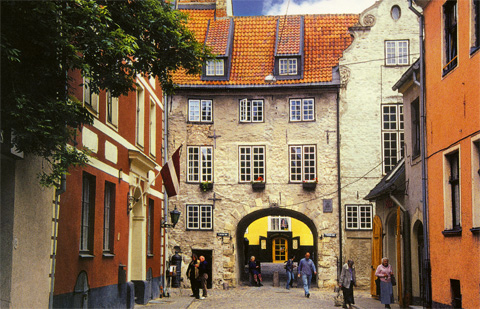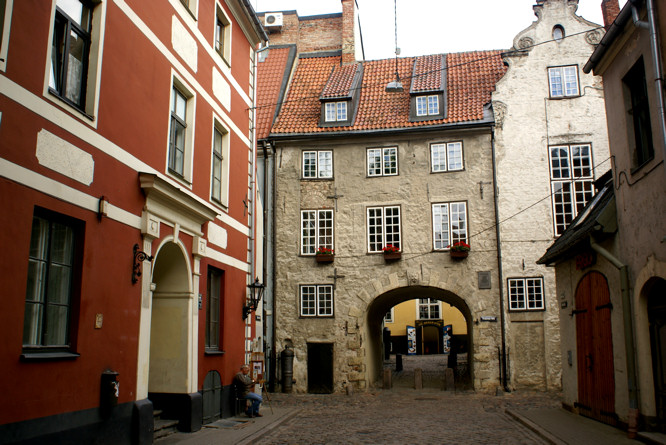The Swedish gate is a monument of culture, architectural complex, located a few houses on the street Torna in Riga in Latvia.
In 1621 Riga was under Swedish rule. Swedish occupation continued until 1711. Naturally, the Swedish rule has left its mark in the Riga history. At this time in the city, new buildings architecture: Yakovlevsky barracks or barracks Jacob and the Swedish gate, which are currently among the most popular sights of Riga.
Peter I ordered to destroy the barracks Jacob. Later in their place were built new. The Swedish gate is the only gate of the city, which survived almost unchanged.
The legend tells that the Swedish gate was built in the late XVII century. One initiative and enterprising Riga merchant decided to cut through the gate in your house No. 11, street Torna. In this way he wanted to evade the payment of duties on goods that were officially imported through Sand city gates. Since the gate was located in his house, the merchant decided to charge for travel through them.
However, there is a more realistic version of the education of the Swedish gate. Most likely, the city authorities, it was decided to equip close the passage to the buildings that were on the street Torna. So have been cut and a new gate.
Swedish gate was so named for two reasons: first of all, their appearance coincided with the time of the occupation of Riga by the Swedes, and the second reason is that most Swedish soldiers used these gates. Soldiers were billeted in Yakovlevsky barracks, which was not far from the gate. Therefore, the Swedish gate is a kind of symbol of the era of the Swedes. On the night of the Swedish gate was locked with a powerful bolts, and the guard watched, that no living soul could pass through them.
There is a legend which says about the midst of a terrible plague. At this time the city was "quarantined". One young girl tried to penetrate the Swedish gate, to see her lover. But the guards managed to catch. The girl was treated very severely. She was walled up alive in a wall. Since then, at night from the side walls, you hear terrible cries and groans of the unfortunate.
But not only this poor girl has become a hostage of the Swedish gate. According to another legend, in the wall next to the gate were immured two lovers: Latvian girl and a Swedish officer. Their love was initially doomed. Because according to the laws of Sweden, the officers could enter into marriage only with girls-Sweden. Lovers defied the rules, for which he paid with their lives.
In our time, this old legend allows lovers to test the sincerity of their feelings. You need to go through the Swedish gate together with your partner. And if their feelings are as strong as the feelings of the unfortunate lovers, exactly at midnight, the pair will hear the coveted "I love you!", coming out of the wall.
And rumor has it that some time in the apartment, situated on the Swedish gate, lived in the city executioner. He had a habit to warn locals about the upcoming execution. The night before he had always put on the box, a red rose, and all the residents knew about the upcoming bloody action.
In 1926, the Society of architects of Latvia rented from the authorities of the town house with the Swedish gate, which was rebuilt in accordance with his new assignment. The building acquired a Baroque appearance, completely coinciding with the time of its appearance. The interior of the house (furnace tiled XVII-XVIII centuries, classic and Baroque ceiling and so on) was equipped Riga architect and artist A. I. Trofimov.
Currently, the ensemble of the House of architects includes house # 11, # 13 and # 15 in the Swedish gate. In addition to the Latvian Union of architects here is the library, which can be freely accessed and to enrich your knowledge about the history and culture of the country.












